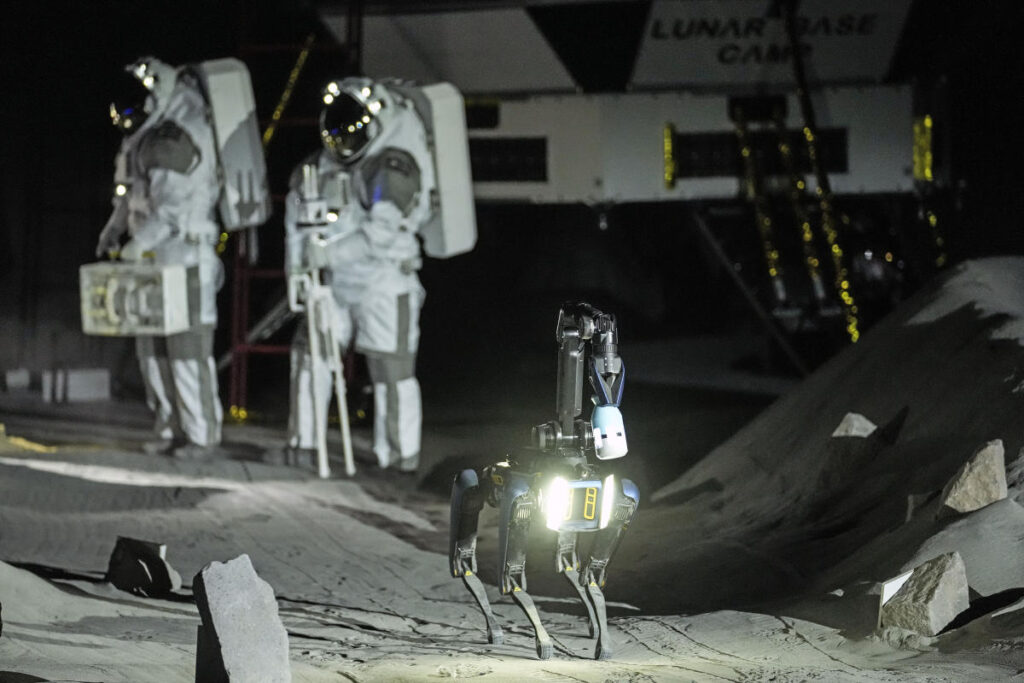COLOGNE, Germany (AP) — Wearing heavy spacesuits and visors to shield themselves from sunlight, French astronauts Thomas Pesquet and German Matthias Maurer, accompanied by their faithful robot dog, move slowly across what appears to be the lunar surface.
But it is not the Moon.
It will take years before the European Space Agency could send one of its astronauts there. For now, they are training at a facility the agency opened Wednesday in Germany that simulates conditions on the moon.
The LUNA facility at the European Astronaut Center near Cologne has 900 tons of crushed volcanic rock like that on the moon spread over an area slightly larger than a basketball court. The low gravity of the moon is simulated using movable, ceiling-mounted carts that follow the movements of a floating astronaut or rover.
At a briefing ahead of the opening, ESA astronaut Alexander Gerst said the facility “will offer most of the features we will encounter on the Moon.”
“It’s the surface, it’s the moon dust, the rocks, the lighting,” he said. “We’ll be working in spacesuits that limit our movement, limit our vision.”
ESA Director General Josef Aschbacher said at the opening ceremony that the facility “marks an important milestone in European space efforts.”
ESA has negotiated three spots on future lunar missions under the NASA-led Artemis program through 2030, depending on the program’s progress. It currently relies on NASA and others to get its astronauts into space. The agency is building the service module for the Orion crew capsule that will fly to the moon as part of Artemis.
“We need to prepare for the Moon, because right now we only fly to low Earth orbit, to the International Space Station,” said ESA astronaut Matthias Maurer. “But the next missions will take us to the Moon.”
The facility’s lunar soil is volcanic rock mined in the Siebengebirge mountain range, not far from the facility’s site, then milled and sieved until it’s as close to the lunar surface as possible. The facility is opening several years later than planned, delayed by the pandemic and the discovery of protected lizards at the site just as construction was about to begin, forcing a move.
There are plans to use the facility, which is jointly operated by ESA and the German Aerospace Agency, for, among other things, testing lunar rovers and practicing walking on the lunar surface in cumbersome spacesuits.

